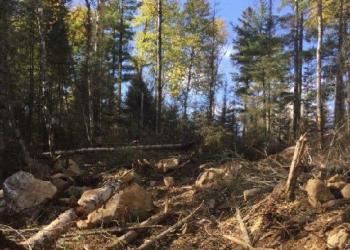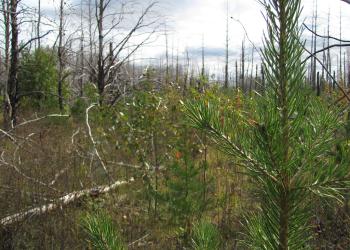Management
The Superior National Forest lies within a boreal forest system where natural fire occurrence is common. The Forest also provides for a variety of recreational and management activities which sometimes result in unwanted human-caused fires.
Fire management is an integral part of Land and Resource Management on the Superior National Forest. Fire plays a natural role in achieving long-term goals of ecosystem health.
Wildland fire management decisions and resource management decisions go hand in hand and are based on approved Fire Management and Land and Resource Management Plans. Wildland fire, as a critical natural process, may be reintroduced into the ecosystem where human life, property, or resource values are not at risk.
In all cases, protection of human life is the first priority in wildland fire management. Property and resource values are the second priority, with management decisions based on values to be protected.
The Forest Service has managed wildland fire for more than 100 years. But how we do it - why, when, and where we do it - has changed. Fire managers have the ability to choose from the full spectrum of fire management options, from prompt suppression to allowing fire to function in its natural ecological role. There are Forest Service-specific and interagency policies and study recommendations that guide fire management decisions.
What hasn't changed is close collaboration with Tribal, state, local, and other federal agencies as well as work with our local communities to reduce risks and protect lives.
- View the Fire Related Communications meeting; held at the Isabella Community Center July 2024
Wildland fire knows no boundaries. Local, state, tribal and federal firefighters all work together to manage wildfires. Pooling our strengths and resources helps us to be more effective and keeps our costs down.
In Minnesota, the Minnesota Incident Command System (MNICS), housed at the Interagency Fire Center in Grand Rapids, MN, is the leader. MNICS is an interagency group with state and federal partners that cooperate in management of wildfire and all risk incidents and provide standard procedures, practices and information to facilitate, coordinate and support actions on incidents in Minnesota.
Community Wildfire Protection Plans (CWPPs) reduce wildland fire risks across larger areas in a shorter amount of time by prioritizing and coordinating efforts across jurisdictions. Following the guidelines of the Healthy Forest Restoration Act 2003, the Superior National Forest, in cooperation with state and local partners, completed and implemented CWPPs for all three counties within our protection area.
Please visit the following links for more information:
- St Louis County Wildfire Protection Plan
- Cook County Wildfire Protection Plan
- Lake County Wildfire Protection Plan
The Forest Service is actively engaged with the community of Ely, Minnesota, which is a Fire Adapted Community
The National Interagency Fire Center (NIFC) is the focal point for coordinating the mobilization of resources for wildland fire and other incidents throughout the United States.
About Balsam Fir:
Fire and the Wildland Urban Interface:
Forest Management and Fire:
- Difference Engine: Fire on the Mountain (Babbage, Science and Technology)
- "Let it burn" - Prescribed Fires Pose Little Danger to Forest Ecology, Study Says (UC Berkely study)
- The Effects of Forest Fuel Reduction (USDA Forest Service)
- Science Basis for Changing Forest Structure to Modify Wildfire Behavior and Severity (USDA Forest Service)
Historic Boundary Waters Canoe Area Wilderness Fire Information:
Smoke Management:
Previous Wildfires
Managing the Greenwood Fire Burn Area

Forest Service, state agencies and private logging companies are helping the forest recover through planting, tree seeding, timber salvage and monitoring for natural forest regeneration.
Pagami Creek Fire

The Pagami Creek Wildfire was first detected on August 18, 2011. Several areas are still being rehabilitated.
Fourtown Fire
Fire Management on Boreal Landscape
Learn more about a career in Fire Management, how the role impacts a boreal forest ecosystem
Restoring Oak Blueberry Habitat Story Map
Ecological Burning on the Superior National Forest. When appropriate, prescribed fire is often used as a tool for fuels reduction, vegetation management, and wildlife habitat maintenance.


